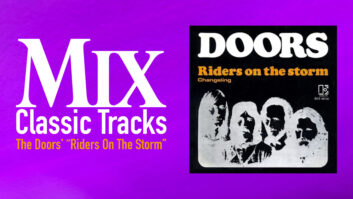
With the unique combination of instruments in this band, the most challenging thing is making the mix sound full, without sounding brittle or harsh. There is an abundance of upper-midrange frequencies, especially in the fiddle and bagpipes, that require careful notch filtering. I find that cutting 4 kHz and 8 kHz on the bagpipes really helps to soften it up. I also find myself boosting a bit of low-mid with the pipes. With no bass guitar in the band, I compensate for that by keeping the bottom end of the guitar as prominent as I can while being careful to cut just a bit of where it can get muddy, usually around 160 cycles. The lack of bass guitar is also made up for by the solid bass drum sound, which originates from a Roland TD-3 sound module. Finally, I place a Sennheiser e604 on the bottom of the Djembe to capture the bass notes that Ryan plays. To keep vocals under control, while also allowing them to cut through the mix, I typically double-bus my vocal channels by assigning them to a pair of subgroups and also directly to the left/right mix. I use a stereo compressor or a pair of compressors inserted on the subgroup, typically with a 3:1 or 4:1 ratio. The compressed signal is blended with the direct, uncompressed signal, which offers so much more control.







